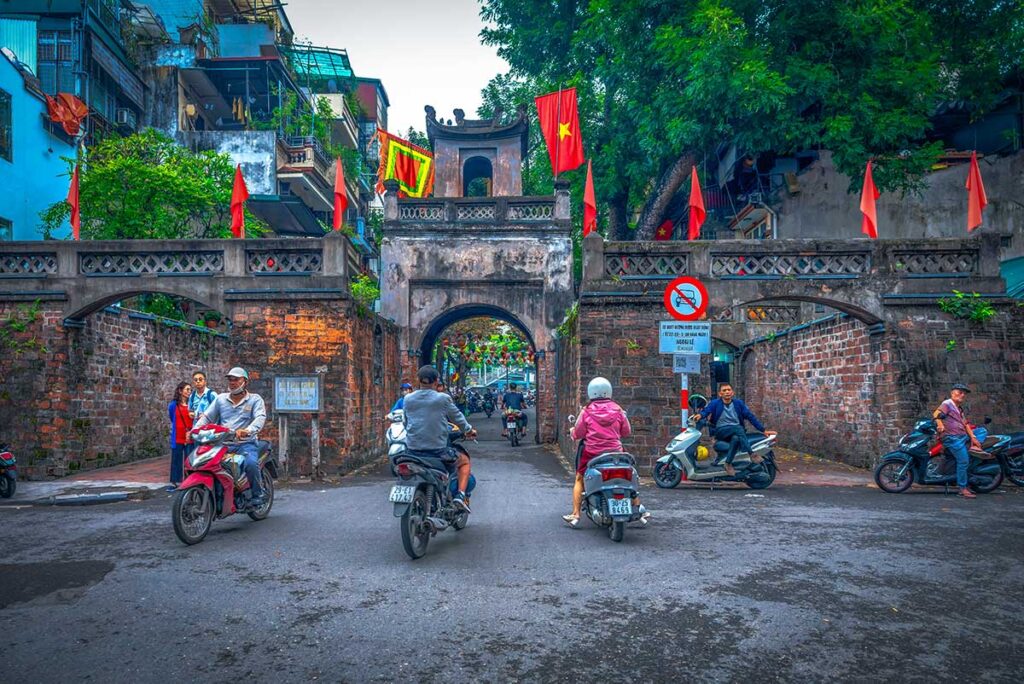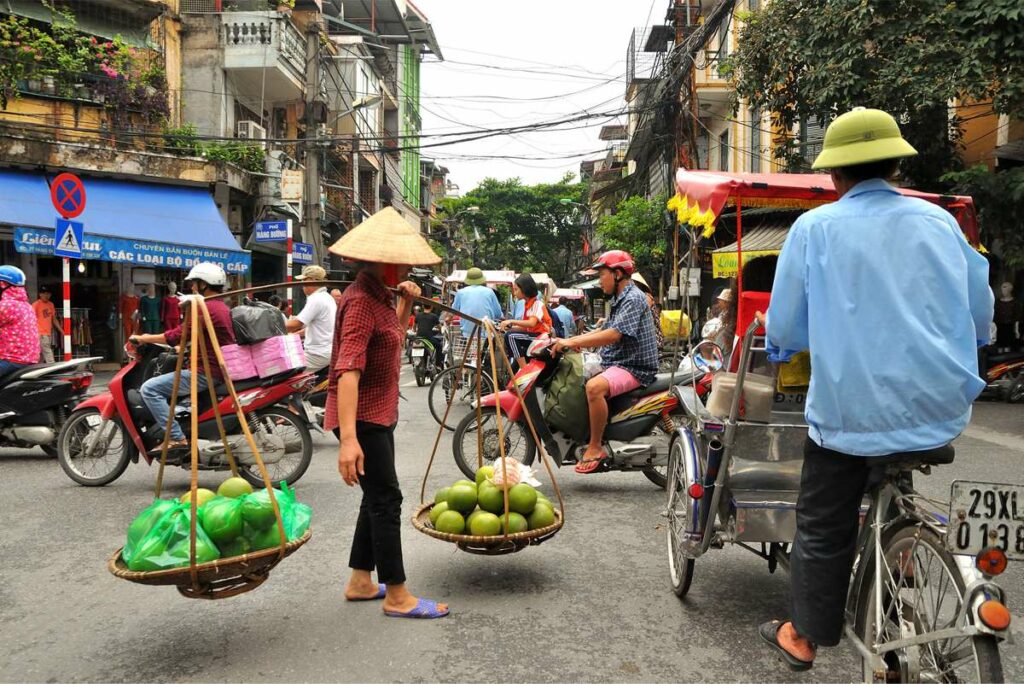What is Hanoi Old City Gate?
Hanoi Old City Gate, also known as O Quan Chuong, is a historic stone-and-brick structure that once formed part of the fortified wall surrounding the ancient capital of Thang Long. Built in 1749, it’s the only remaining gate out of more than 20 original entrances that once guarded the city. Today, it stands at the eastern edge of Hanoi’s Old Quarter, near Dong Xuan Market, where it continues to serve as both a symbolic relic and a functioning passageway in the city’s daily rhythm.
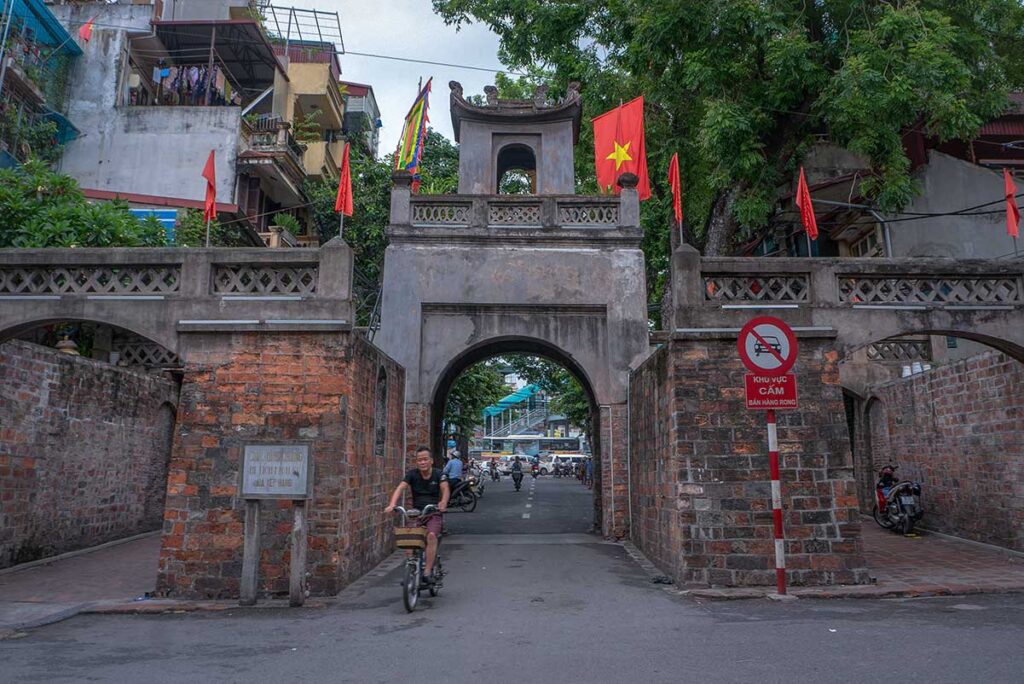
In the next sections, we’ll explore the gate’s history, what you can see today, how to get there, and what’s nearby.
History of the Old East Gate (O Quan Chuong)
Built to protect the citadel
The Old City Gate of Hanoi, originally called Dong Ha Gate, was built in 1749 under the rule of King Le Hien Tong. It stood as part of the eastern wall of the fortified Thang Long Citadel, once the political and cultural center of Vietnam. In 1873, during the first French assault on Hanoi, a Nguyen Dynasty officer named Quan Chuong led a group of soldiers to defend the gate. He was killed in the battle, and the gate was later renamed in his honor.
A gate among many — now the only one left
In its heyday, the walled city had over 20 gates, each serving as a control point for trade, taxation, and fire prevention. These gates were also staffed with guards who monitored traffic in and out of the capital. However, during the French colonial period, most of them were demolished to make way for new infrastructure. O Quan Chuong is the only one that remains today, preserved largely thanks to its continued relevance in local daily life and later conservation efforts.
Restorations and preservation
The gate was restored twice during the Nguyen Dynasty, first in 1804 and again in 1817, which shaped much of its current form. More recently, from 2009 to 2011, a major restoration project was funded by the U.S. Ambassadors Fund for Cultural Preservation. This effort repaired significant wear and structural damage caused by pollution, urban development, and older patchwork repairs.
Hidden details from the past
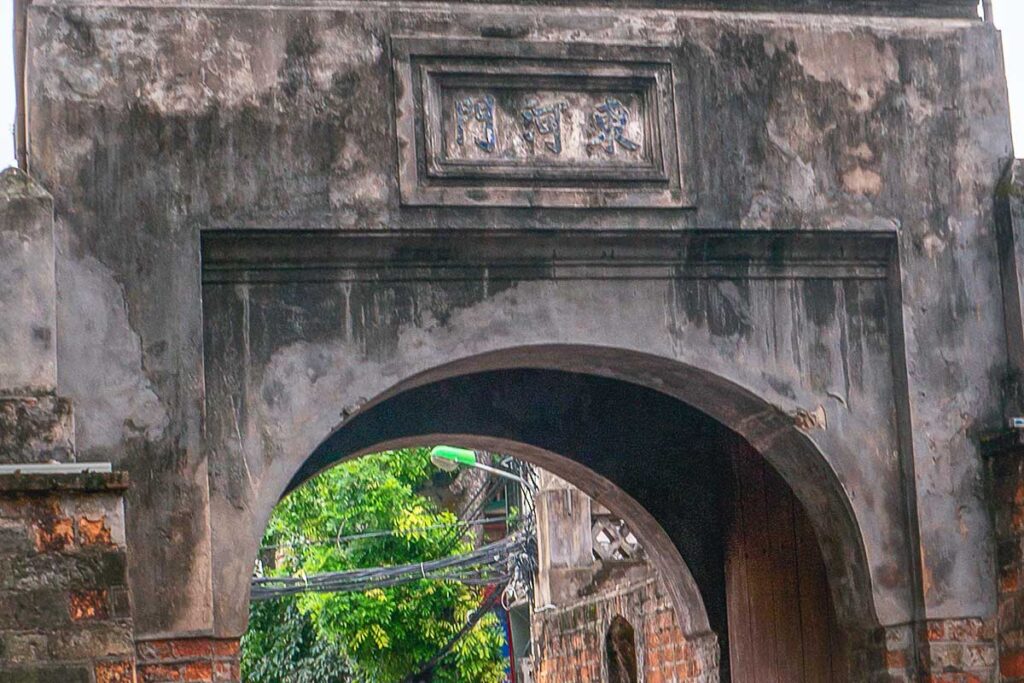
If you look closely, you’ll see three blue-glazed Chinese characters (門河東) above the central archway — a remnant of the gate’s original name, Dong Ha Mon. Just to the left of the arch stands a stone stele from 1881, carved with an order from Governor Hoang Dieu instructing guards not to interfere with funeral processions. It’s a small but revealing glimpse into how city life was once tightly controlled under local regulations.
What can you see today?
1. Nguyen Dynasty design with three arches
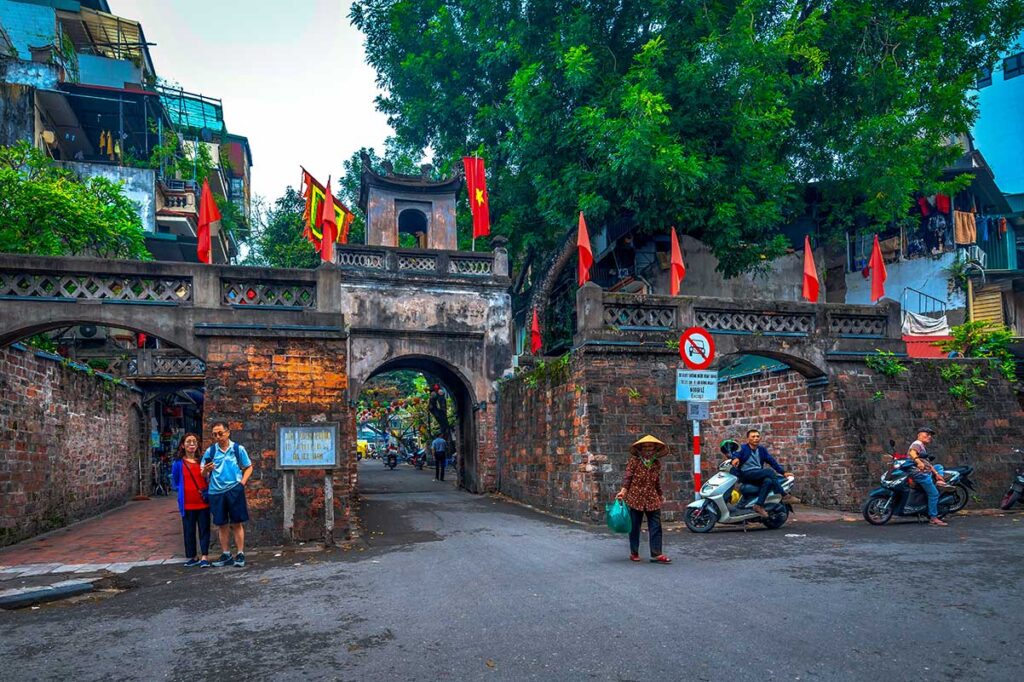
O Quan Chuong’s architecture is compact but eye-catching. The structure has two levels. On the ground floor are three arched entrances — the central one standing 3 meters high and wide, flanked by two smaller side arches each measuring about 1.65 meters wide and 2.5 meters high. All three are built in a rounded dome style typical of Nguyen Dynasty military architecture.
2. An upper pavilion with elegant touches
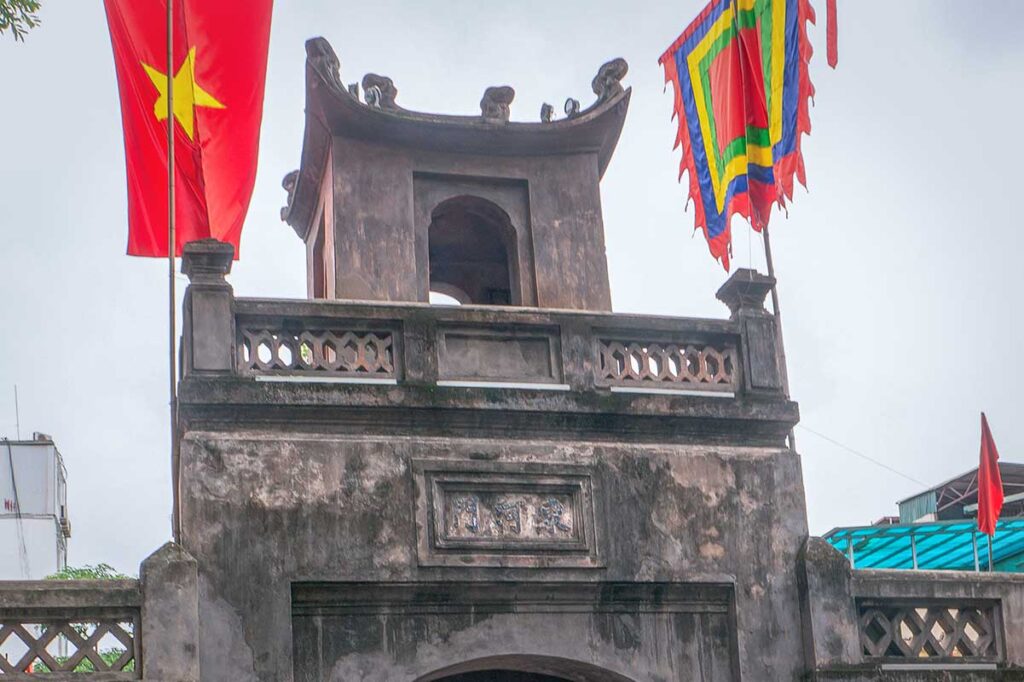
Above the arches sits a small guard pavilion, once used as a watchtower. It has a four-sided tiled roof, floral decorative elements, and stone balustrades, adding a graceful contrast to the heavy masonry below. The original name Dong Ha Mon is still visible in large Chinese characters on the upper façade.
3. Part of daily life, not a museum
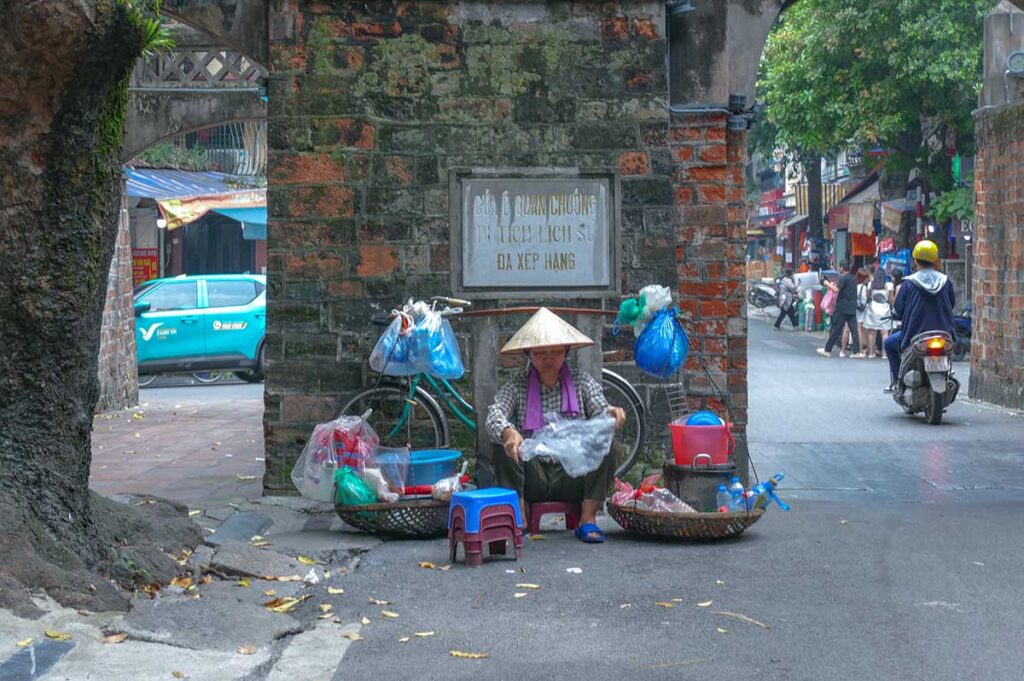
What makes the gate especially memorable is its setting. Unlike a museum piece sealed off from the world, daily life flows right through it.
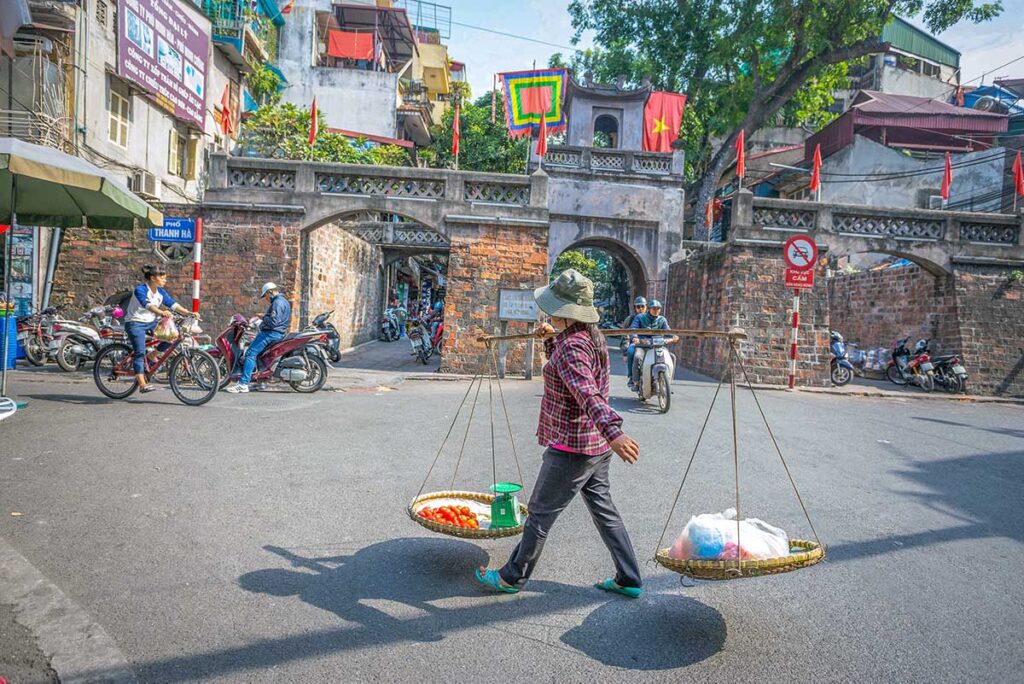
Locals pass through on motorbikes, vendors set up stalls nearby, and traffic flows under the arches as it has for centuries. It’s not roped off or hidden behind barriers — the gate is part of the living, breathing Old Quarter, making the history feel immediate and real.
4. Street food around the gate
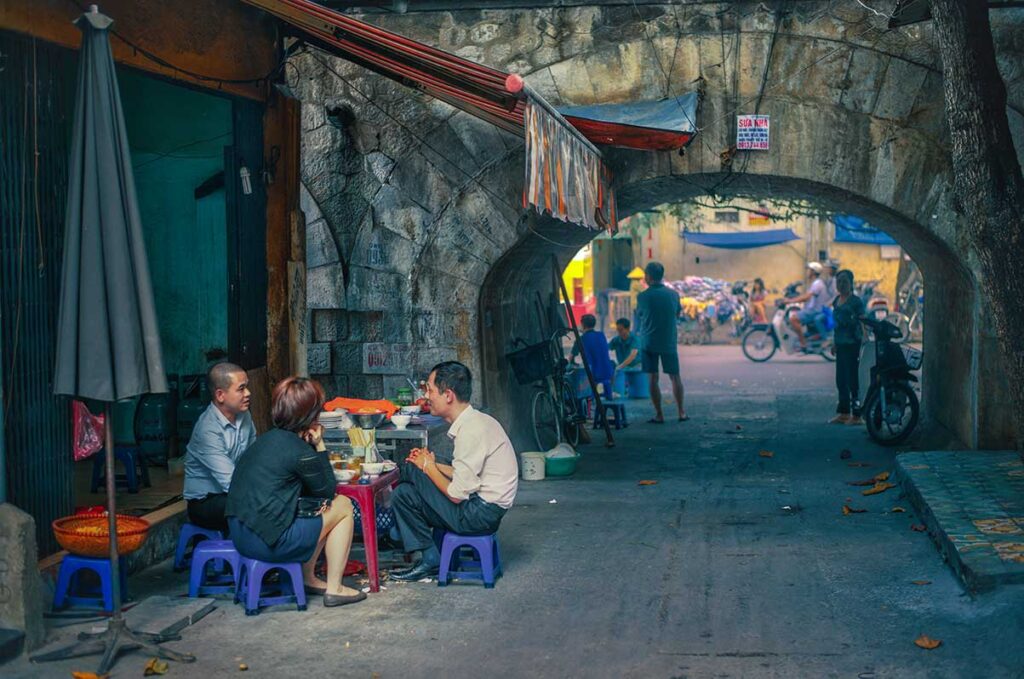
While you’re here, it’s worth sampling some of the area’s simple but beloved food. Stop by No. 6 O Quan Chuong Street for a comforting bowl of beef noodle soup, or head to nearby Hang Chieu Street for a crispy mung bean donut — a small, local favorite that often sells out well before dusk.
Location and How to get there
Right on the edge of the Old Quarter
Hanoi Old City Gate (O Quan Chuong) sits at the eastern boundary of the Old Quarter, just a few steps from Dong Xuan Market. You’ll find it at the busy intersection of O Quan Chuong Street, Hang Chieu, Dao Duy Tu, and Thanh Ha — where several historic trade streets meet in a knot of traffic, food stalls, and street life.
Best explored on foot
If you’re already wandering around the Old Quarter, getting to the gate is easy — just include it as part of your walking route. The area is compact and full of small alleyways, so walking is the most convenient and enjoyable way to explore.
Coming from other parts of Hanoi
From elsewhere in the city, the best way to reach the gate is to book a Grab car or motorbike and get dropped off somewhere near Dong Xuan Market or O Quan Chuong Street. From there, it’s a short walk. Avoid coming by private car if you’re staying in central Hanoi — the Old Quarter’s streets are narrow, crowded, and have almost no parking.
Best time to visit
If you want to see the gate in peace — and without the constant stream of motorbikes — come very early in the morning, just after sunrise.
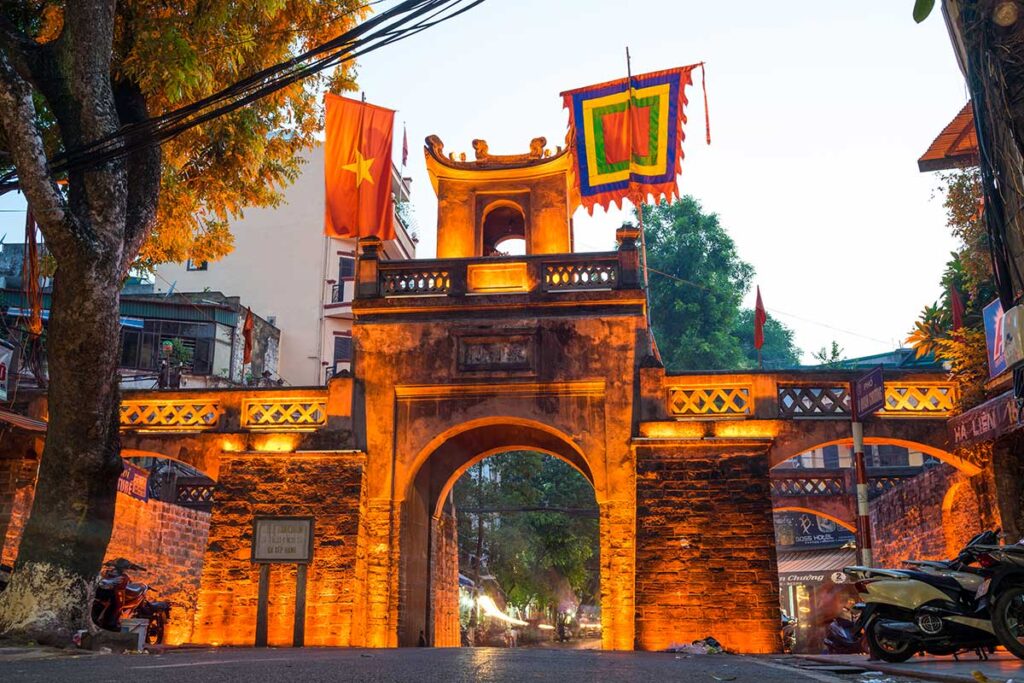
For a more atmospheric visit, stop by in the evening, when the gate is softly lit and surrounded by the energy of street food stalls and locals heading home. During the daytime, especially in the late morning and afternoon, expect busy traffic passing directly through the arches.
Nearby sights
The gate sits in Hanoi’s Old Quarter — a maze of narrow streets, tube houses, and alleyways that’s already a major attraction. But if you want to combine your visit with other interesting stops, there are several within easy walking distance:
- Dong Xuan Market – Just around the corner, this is one of Hanoi’s largest and busiest wholesale markets, great for people-watching, textiles, and cheap eats.
- Bach Ma Temple – One of the oldest temples in the city, dedicated to the legendary white horse that helped choose the site of the ancient citadel.
- Ma May Ancient House – A well-preserved 19th-century merchant’s home offering a glimpse into traditional architecture and urban life.
- Long Bien Bridge – A short walk north, this historic iron bridge was built during the French colonial era and spans the Red River — great for photos and views of local life.
- Hoan Kiem Lake – Walkable in about 10–15 minutes, this scenic lake is Hanoi’s symbolic heart, surrounded by temples, trees, and cafés.
For more inspiration, check out our full guide to the Best things to do in Hanoi Old Quarter.
Is Hanoi Old City Gate worth visiting?
Hanoi Old City Gate isn’t a major attraction on its own — it’s small, and many travelers pass through it in minutes. But what makes it worth visiting is how naturally it fits into the city around it. Locals ride motorbikes under its arches, street vendors sell snacks nearby, and life carries on around a structure that’s more than 250 years old.
It’s an easy, meaningful stop during any Old Quarter walk, and a rare place where Hanoi’s deep history and chaotic present visibly overlap. Even if it doesn’t blow you away, it’s worth a quick visit for the contrast, the photo opportunities, and the sense of place it offers.
